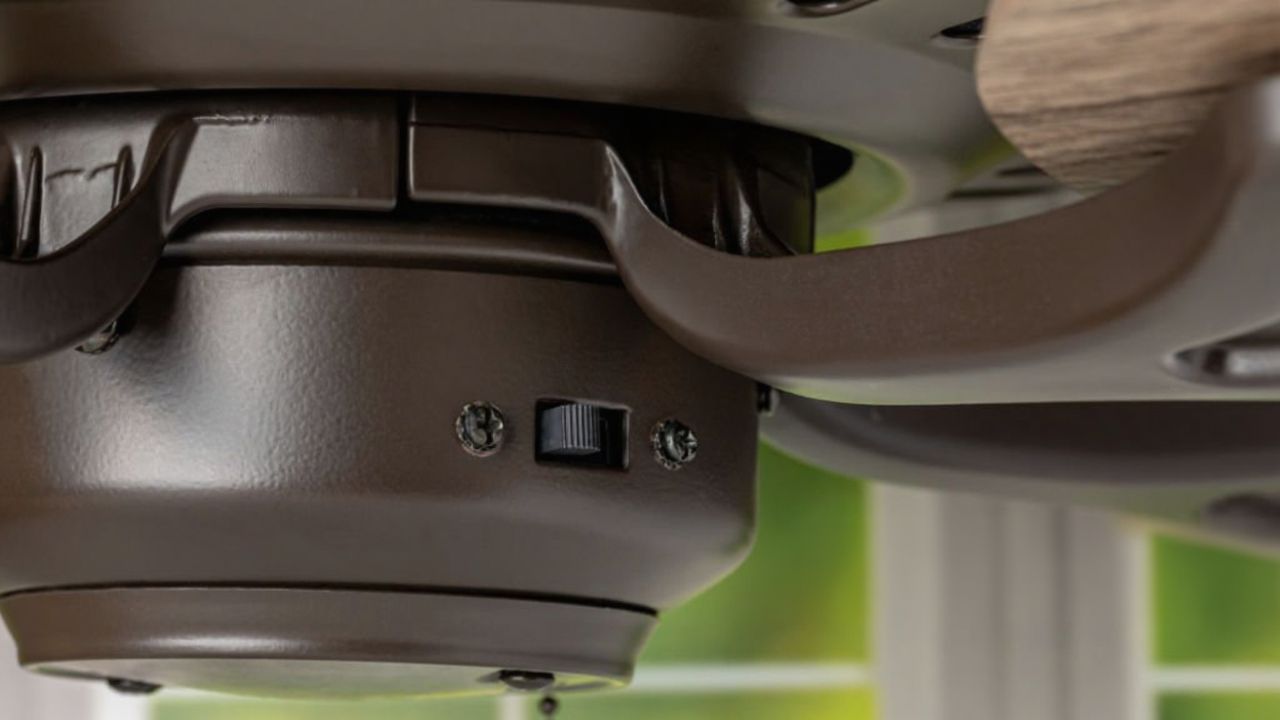You’re probably not using your ceiling fans right in the winter
Most people turn their ceiling fans off once the temperatures drop, assuming they’re only useful in summer. But that fan you ignore all winter could actually make your house feel warmer—if you’re using it the right way.
The problem is, most people never flip the small switch that changes its direction. That one simple step can make a noticeable difference in how your house holds heat and how much your furnace has to work.
Warm air rises—and that’s where your fan comes in
When you run the heat, warm air naturally rises and collects near the ceiling. That’s great for your light fixtures, but not so great for you sitting on the couch wondering why your toes are cold. A ceiling fan helps solve that problem, but only if it’s spinning in the correct direction.
In the winter, your fan should run clockwise at a low speed. That gentle rotation pulls cool air upward and pushes the trapped warm air along the ceiling back down the walls and into the living space. You won’t feel a breeze, but you will notice the room feeling warmer without having to raise the thermostat.
The switch most people never touch

If you’ve never changed your fan’s direction before, you’re not alone. Most ceiling fans have a tiny toggle switch near the base of the motor. When flipped one way, the blades rotate counterclockwise—ideal for cooling. Flip it the other way, and the blades turn clockwise—perfect for circulating heat in winter.
It takes less than ten seconds to change, but that small adjustment can help reduce your heating bill by moving warm air where you can actually feel it. The fan does the work of evening out the temperature, so you don’t have hot spots near the ceiling and cold pockets near the floor.
Speed matters more than you think
You don’t want to run your fan on high speed in the winter. Too much airflow creates a breeze that feels cool against your skin, defeating the purpose. Keep it on the lowest setting so it moves air gently without making you feel like you’re sitting under a vent.
This slow circulation helps distribute heat evenly throughout the room. It’s especially helpful in rooms with tall ceilings or open layouts where heat tends to rise out of reach.
Fans work with your heat, not against it
A ceiling fan doesn’t make the air warmer—it helps the warm air you already paid for reach the areas you actually live in. That means your heater doesn’t have to cycle on as often to maintain the same temperature. Over the course of a season, that small difference can save real money.
If you rely on space heaters or wood heat, a fan is even more useful. It helps move the warm air from one area into nearby rooms, making the entire space more comfortable without adding extra energy use.
Placement makes a difference
If you have multiple fans throughout your home, pay attention to where they’re located. Fans in large gathering spaces like the living room or kitchen will make the biggest impact. Bedrooms can benefit too, but you may not need them running all the time—try using a timer or smart switch if you prefer.
For homes with vaulted ceilings, you might need to increase the fan’s speed slightly to feel the difference since the warm air has more space to travel. Even then, the key is still to avoid any noticeable breeze.
Maintenance keeps them working efficiently
Before you switch directions, take a minute to clean the blades. Dust buildup can throw off the balance, make noise, and reduce efficiency. While you’re at it, tighten any loose screws on the blades or motor housing.
Lubricating older fan motors or checking for worn bearings can also extend the life of your fan. It’s a quick maintenance habit that keeps things running quietly and smoothly through every season.
Use it strategically throughout the day

You don’t need your fans running all the time. Run them during the day when your heat is on, and turn them off at night when the temperature naturally drops and your furnace cycles less. That balance saves energy and helps keep your home more comfortable without overdoing it.
If your home has different heating zones or rooms that always feel colder, using a fan in those spaces during the day can even things out and reduce the need for constant thermostat adjustments.
Small change, big comfort
Flipping your fan’s direction isn’t the kind of upgrade that takes time or money—it’s one of those small seasonal habits that pays off every winter. You’ll notice your rooms feel warmer, your heat runs less often, and your energy bill doesn’t climb as fast.
Most people overlook their ceiling fans once the weather turns cold, but if you use them right, they quietly make your home feel cozier without costing you a dime more in energy. It’s one of those little things that makes winter living a lot more comfortable.
Like Fix It Homestead’s content? Be sure to follow us.
- I made Joanna Gaines’s Friendsgiving casserole and here is what I would keep
- Pump Shotguns That Jam the Moment You Actually Need Them
- The First 5 Things Guests Notice About Your Living Room at Christmas
- What Caliber Works Best for Groundhogs, Armadillos, and Other Digging Pests?
- Rifles worth keeping by the back door on any rural property
*This article was developed with AI-powered tools and has been carefully reviewed by our editors.







